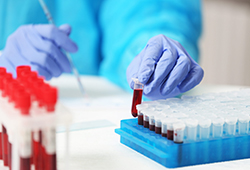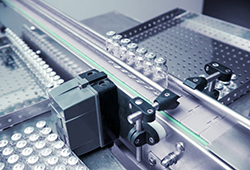FDA Issues Guidance for Cell and Gene Therapy Manufacturers to Minimize Potential Transmission of SARS-CoV-2
 On January 19, 2021, the FDA issued guidance for licensed and investigational cellular and gene therapy (CGT) manufacturers during the COVID-19 pandemic. This new guidance supplements the recommendations provided in FDA’s June 2020 guidance regarding manufacturing controls to prevent contamination in drugs, risk assessment of SARS-CoV-2 as it relates to drug safety and quality, and continuity of manufacturing operations as applied to all drug and biological product manufacturers.
On January 19, 2021, the FDA issued guidance for licensed and investigational cellular and gene therapy (CGT) manufacturers during the COVID-19 pandemic. This new guidance supplements the recommendations provided in FDA’s June 2020 guidance regarding manufacturing controls to prevent contamination in drugs, risk assessment of SARS-CoV-2 as it relates to drug safety and quality, and continuity of manufacturing operations as applied to all drug and biological product manufacturers.
The new guidance provides risk-based recommendations to minimize potential transmission of SARS-CoV-2 to patients and facility personnel with specific considerations relating to, among other things, the assessment of donors, cellular and tissue source materials, manufacturing processes, manufacturing facility control, material testing, and the number of patients that can be treated with the product. While FDA acknowledges in the guidance that is not aware of any CGT products that have been contaminated with SARS-CoV-2 or of information indicating transmission of SARS-CoV-2 via CGT products, FDA notes that “CGT manufacturers are expected to evaluate whether [the virus] poses new risks in the context of their specific products, facilities, processes, and manufacturing controls.”
FDA recommends that CGT manufacturers review the current good manufacturing practice requirements and recommendations and perform a risk assessment that identifies, evaluates, and mitigates factors that may allow for transmission of SARS-CoV-2 to patients and facility personnel and include a description of the risk assessment and mitigation strategies in any investigational new drug application (IND), biologics license application (BLA), or master file. Since this is an evolving area, manufacturers should look to scientific literature to provide justification and support for their risk assessment and mitigation strategies.
CGT manufacturers should evaluate their manufacturing operations for SARS-CoV-2 risks and be sure that all risk assessments of production controls, including any follow-up and changes, are approved by their quality unit and appropriately documented within their quality management system.
 What is an accelerator? An accelerator is an entity that provides a fixed-term, cohort-based program designed to accelerate growth and support disruptive and innovative early-stage businesses. They can be generalist or specialist and are located all around the world.
What is an accelerator? An accelerator is an entity that provides a fixed-term, cohort-based program designed to accelerate growth and support disruptive and innovative early-stage businesses. They can be generalist or specialist and are located all around the world. University tech transfer offices (TTOs) and venture capital firms (VCs) work closely together to advance certain technologies and discoveries from the lab to the market. However, because there are different motivations and incentives for TTOs and VCs while negotiating licensing agreements, tensions often arise during these negotiations.
University tech transfer offices (TTOs) and venture capital firms (VCs) work closely together to advance certain technologies and discoveries from the lab to the market. However, because there are different motivations and incentives for TTOs and VCs while negotiating licensing agreements, tensions often arise during these negotiations. On January 12, 2021, the U.S. Food and Drug Administration (FDA) published its
On January 12, 2021, the U.S. Food and Drug Administration (FDA) published its  In recent posts, we reviewed
In recent posts, we reviewed  As follow-up to our October
As follow-up to our October  On December 27, 2020, the President signed into law the “Consolidated Appropriations Act, 2021” (the “Act”). Included within this omnibus legislation are several provisions (in Division BB, Title III, Subtitle C) that affect the regulation of generic drugs and biosimilar medicines by the U.S. Food and Drug Administration (FDA).
On December 27, 2020, the President signed into law the “Consolidated Appropriations Act, 2021” (the “Act”). Included within this omnibus legislation are several provisions (in Division BB, Title III, Subtitle C) that affect the regulation of generic drugs and biosimilar medicines by the U.S. Food and Drug Administration (FDA). During the COVID-19 pandemic, M&A counsel and their respective life science clients have attempted to navigate the new normal of an unprecedented situation.
During the COVID-19 pandemic, M&A counsel and their respective life science clients have attempted to navigate the new normal of an unprecedented situation.